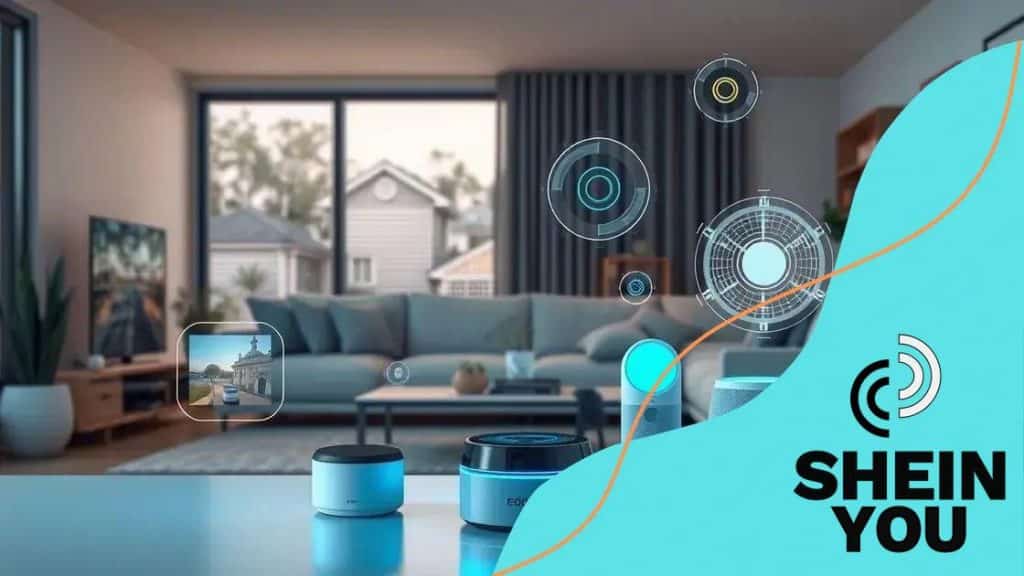Edge AI devices 2025: transform your daily tasks today

Advertisements
Edge AI devices are reshaping the way we interact with technology. By bringing artificial intelligence closer to the source of data, these devices make everyday tasks faster, safer, and more efficient.
From healthcare to smart homes, their presence is expanding rapidly, and their influence on daily life is becoming undeniable.
Have you ever imagined your devices making instant decisions without waiting for cloud servers? That’s exactly what this new generation of technology delivers.
Advertisements
Let’s explore how Edge AI devices are redefining convenience, security, and innovation.
What are edge AI devices?
Edge AI devices are intelligent systems that combine the power of artificial intelligence with local data processing. Instead of relying solely on distant cloud servers, they analyze information directly on the device or at the network’s edge.
Advertisements
This shift makes them faster, more reliable, and better suited to applications where immediate decisions are critical.
According to recent industry analyses, one of the most transformative aspects of these devices is their ability to perform real-time analytics.
By processing data locally, they reduce latency to milliseconds, enabling use cases such as autonomous driving, industrial automation, and medical monitoring—scenarios where even a small delay can have significant consequences.
Key characteristics of Edge AI devices
- Local data processing: Information is managed on-site, eliminating dependency on constant cloud communication.
- Reduced latency: Responses are generated instantly, essential for safety-critical and time-sensitive applications.
- Improved privacy and security: Sensitive data stays closer to its source, reducing risks of breaches and unauthorized access.
- Energy-efficient design: Many devices are optimized for longer battery life, making them practical for wearables and remote environments.
Everyday integration
What makes Edge AI devices especially impactful is how seamlessly they integrate into daily life. Smart cameras can identify unusual activity and provide alerts in real time, enhancing home security.
Wearable health monitors continuously track vital signs, offering personalized insights without the need for constant cloud connectivity. In both cases, the immediacy of the response highlights why edge computing is becoming indispensable.
At a broader level, these devices reflect a fundamental shift in computing architecture.
By keeping intelligence close to where data is created, Edge AI devices provide faster decisions, better protection of sensitive information, and greater resilience, paving the way for more autonomous and adaptive technologies across industries.
Benefits of using edge AI devices

The adoption of Edge AI devices brings clear advantages compared to cloud-dependent systems.
By processing information locally, they provide immediate responses, protect sensitive data, and reduce reliance on external servers. These benefits make them essential for industries that depend on speed, reliability, and security.
Real-time decision-making
One of the most important benefits is the ability to analyze data instantly. Edge AI devices ensure that applications such as healthcare monitors, autonomous vehicles, and industrial systems can act in real time.
A health device can immediately alert doctors about a patient’s anomaly, while a self-driving car can adjust its path in seconds to avoid accidents.
Enhanced privacy and security
Because data is processed at the source, Edge AI devices minimize the risks of unauthorized access. Sensitive information does not need to be constantly transmitted to distant servers, which reduces exposure to cyber threats.
This localized approach is essential in fields such as finance and healthcare, where privacy is critical.
Efficiency and reliability
Another advantage is the reduction in bandwidth use and operating costs. By handling information locally, Edge AI devices avoid overloading networks and ensure functionality even with weak or unstable internet connections.
This reliability makes them valuable in remote areas and industries where continuous service is non-negotiable.
Sustainability and energy savings
Compared to centralized systems, Edge AI devices often consume less power since they process only essential data on-site.
This efficiency lowers energy costs and contributes to sustainability goals, helping organizations align with global initiatives to reduce environmental impact.
Practical business benefits
The benefits of Edge AI devices are already visible in the market. Manufacturers predict machine failures before they happen, avoiding costly downtime. Retailers manage inventory in real time and speed up customer service.
Hospitals rely on continuous patient monitoring that provides accurate, life-saving insights. Each case shows how these devices improve outcomes while lowering risks.
The combination of speed, security, efficiency, and sustainability explains why Edge AI devices are becoming the backbone of digital transformation worldwide.
Real-world applications of edge AI devices

The versatility of Edge AI devices is evident across multiple industries. By enabling real-time analysis and secure local processing, they provide solutions that improve efficiency, safety, and user experience.
Their impact is visible in sectors ranging from healthcare to agriculture, proving how this technology adapts to very different needs.
Healthcare and patient monitoring
In healthcare, Edge AI devices are transforming how professionals track and respond to patient conditions. Wearable sensors and smart monitors collect vital signs and analyze them instantly, alerting medical teams in case of anomalies.
This not only speeds up diagnosis but also enhances patient safety, reducing the need for constant cloud communication.
Manufacturing and industrial automation
Factories are increasingly adopting Edge AI devices for predictive maintenance and automation. By analyzing machine data locally, these systems can anticipate failures before they occur.
This reduces downtime, increases productivity, and lowers maintenance costs, creating smarter and more resilient industrial operations.
Smart cities and urban safety
Urban environments benefit greatly from edge intelligence. Edge AI devices power smart surveillance systems capable of detecting unusual activities in real time.
They also support traffic management by analyzing vehicle flows instantly, reducing congestion and improving public safety. These applications show how edge technology contributes to building more efficient and secure cities.
Retail and customer experience
Retailers use Edge AI devices to optimize inventory management and enhance shopping experiences. Smart shelves detect stock levels immediately, while checkout systems process transactions faster.
This creates smoother customer journeys while giving businesses accurate data for decision-making.
Agriculture and precision farming
In agriculture, Edge AI devices play a key role in precision farming. Sensors installed in fields monitor soil quality, humidity, and crop health, providing farmers with real-time insights.
This allows for better irrigation, optimized fertilization, and higher yields while reducing waste and environmental impact.
The wide range of applications demonstrates how Edge AI devices are not limited to one industry but serve as a foundation for smarter, safer, and more sustainable solutions across society.
How to choose the right edge AI device
Selecting the right Edge AI device can feel overwhelming due to the wide variety of options available. Each device is designed with specific use cases in mind, so understanding your needs is the first step in making an effective choice.
Define your application needs
Start by identifying the exact purpose of the device. Smart home automation requires different specifications compared to industrial monitoring or healthcare analytics.
Choosing a device aligned with your application ensures you get the right balance of power, connectivity, and features.
Evaluate processing power
The performance of Edge AI devices depends largely on their ability to handle complex computations.
Devices designed for medical diagnostics or autonomous driving must process large volumes of data instantly, while simpler applications like smart cameras may require less power. Assessing this capacity is crucial before investing.
Consider connectivity options
Integration with your existing systems is essential. Edge AI devices should connect seamlessly with networks and other devices.
If your environment has limited or unstable internet access, opt for solutions that maintain strong performance even in offline or low-bandwidth scenarios.
Think about scalability
A good device should adapt as your needs evolve. Scalable Edge AI devices allow future expansions, whether by supporting additional sensors, handling larger data volumes, or integrating with new technologies such as 5G. This flexibility ensures long-term value.
Prioritize security features
Since these devices often process sensitive data, robust protection is non-negotiable.
Look for Edge AI devices that incorporate advanced encryption, secure boot mechanisms, and reliable authentication methods to minimize risks of breaches.
Deployment and support
Ease of installation and ongoing maintenance also matter. Some devices are designed for quick setup and minimal upkeep, while others require more technical expertise.
Reliable vendor support, strong documentation, and active user communities can make a significant difference in maximizing performance.
By carefully analyzing these aspects, you can confidently select Edge AI devices that align with your specific needs, ensuring efficiency, safety, and adaptability for the future.
Future trends in edge AI technology

The future of Edge AI devices is shaped by rapid technological innovation and the growing demand for smarter, faster, and more secure solutions.
As industries continue to integrate AI into their processes, the edge will play an increasingly central role in how data is processed and applied.
The impact of 5G connectivity
One of the most significant trends is the rise of 5G. With higher speeds and lower latency, this network technology will allow Edge AI devices to process larger and more complex datasets instantly.
It will enhance real-time applications such as autonomous driving, telemedicine, and advanced robotics, making them more reliable and scalable.
Smarter and more efficient algorithms
Advancements in AI models will make Edge AI devices even more intelligent. New machine learning techniques allow these devices to learn locally from smaller data sets, improving accuracy and reducing the need for constant cloud updates.
This evolution will expand their usefulness across industries, from manufacturing to smart homes.
Sustainability and energy efficiency
The future of edge computing also involves a stronger focus on sustainability. Edge AI devices are increasingly being designed to use less energy while maintaining high performance.
This not only reduces operational costs but also aligns with global initiatives to cut carbon emissions and promote greener technology.
Greater collaboration between devices
Another important trend is the creation of interconnected ecosystems. Instead of working in isolation, Edge AI devices will collaborate, sharing insights and coordinating actions.
In smart cities, for example, traffic sensors, surveillance cameras, and public safety systems will communicate to improve urban efficiency and safety.
Privacy-enhancing technologies
As concerns about data security grow, future Edge AI devices will integrate more advanced privacy features.
Encryption at the hardware level and on-device processing will strengthen trust and allow industries like healthcare and finance to expand edge adoption with confidence.
The combination of faster connectivity, advanced intelligence, sustainable design, and stronger privacy measures shows that Edge AI devices will be at the core of the next wave of digital transformation.
They will not only improve business efficiency but also reshape how people interact with technology in everyday life.
Conclusion
The rise of Edge AI devices is not just a technological trend but a turning point in how data is processed, secured, and applied across industries.
By running intelligence at the edge, these devices reduce latency, improve privacy, and enable real-time insights that were once impossible with cloud-only solutions.
From autonomous vehicles making split-second decisions to healthcare monitors providing life-saving alerts, the impact on daily life is already profound.
Looking ahead, the adoption of Edge AI devices will continue to accelerate as businesses and consumers demand smarter, faster, and more sustainable technology.
According to insights from IBM, edge AI is becoming a cornerstone of digital transformation, helping organizations scale innovation and manage data more effectively.
Likewise, analysis from F5 highlights how edge computing enhances security and resilience by keeping critical information closer to its source.
This convergence of speed, security, and sustainability places Edge AI devices at the center of the next wave of intelligent systems. For companies, adopting these tools means greater efficiency and competitiveness.
For individuals, it means living in environments that are more connected, reliable, and responsive to human needs. In short, the future of AI is no longer confined to distant servers, the future is being built at the edge.
FAQ – Frequently Asked Questions About Edge AI Technology
What are edge AI devices?
Edge AI devices are smart devices that process data locally, near the source of data, reducing latency and improving response times.
How does edge AI enhance security?
By processing data locally, edge AI devices minimize the risk of sensitive information being transmitted over the internet, thus enhancing data privacy.
What industries benefit most from edge AI technology?
Industries such as healthcare, manufacturing, and smart cities benefit greatly from edge AI by enabling faster decision-making and more efficient processes.
What should I consider when choosing an edge AI device?
Consider factors like processing power, connectivity, scalability, and security features to find the right edge AI device for your needs.